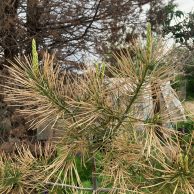
Lace Bark Pine
by Mikl Brawner
As we enter June, most of our trees and shrubs have leafed out, but not all. Some have leaves only three quarters of the way up, and many broad-leafed evergreens are mostly brown. Should we cut them back or replace them? Let’s not, just yet.

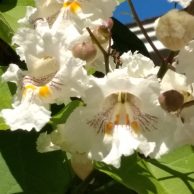 So they can support us!
So they can support us!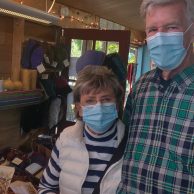 We are appreciative of the community support at our Holiday Market opening weekend! With the perfect autumnal weather, more people than ever were able to enjoy our local musicians, Sandra Wong & Jon Sousa’s world music, and Margot Krimmel’s traditional and original harp pieces.
We are appreciative of the community support at our Holiday Market opening weekend! With the perfect autumnal weather, more people than ever were able to enjoy our local musicians, Sandra Wong & Jon Sousa’s world music, and Margot Krimmel’s traditional and original harp pieces.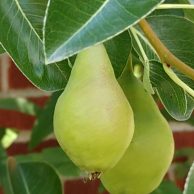 First, let’s count our blessings: the cool and wet spring has been great for plant growth (and of course, weeds galore!). The profusion of wildflowers this spring has been glorious, the foothills are still green going into July, and conditions for gardening are now quite pleasant. And we will have fruit on most of our fruit trees! Don’t forget to thin them to keep branches and trunks from breaking.
First, let’s count our blessings: the cool and wet spring has been great for plant growth (and of course, weeds galore!). The profusion of wildflowers this spring has been glorious, the foothills are still green going into July, and conditions for gardening are now quite pleasant. And we will have fruit on most of our fruit trees! Don’t forget to thin them to keep branches and trunks from breaking. We hope you will celebrate Earth Day, maybe all week. It is good to acknowledge that we have a planet and that it has been supportive of life and human life for a long time. Unfortunately, we humans have not treated Her well, Gaia, our Mother Earth. We were told the story that we humans are the masters of the earth and that all the creatures and resources are here for our use and glory. Not everybody believed that story. Chief Joseph told our ancestors: “The Earth does not belong to us; we belong to the Earth.”
We hope you will celebrate Earth Day, maybe all week. It is good to acknowledge that we have a planet and that it has been supportive of life and human life for a long time. Unfortunately, we humans have not treated Her well, Gaia, our Mother Earth. We were told the story that we humans are the masters of the earth and that all the creatures and resources are here for our use and glory. Not everybody believed that story. Chief Joseph told our ancestors: “The Earth does not belong to us; we belong to the Earth.” 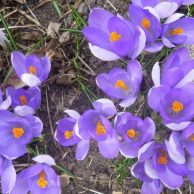 How did we possibly get this far? When we first opened in 1992, we had 2 acres a half mile down a dead-end gravel road, a dry well, a barn and a little greenhouse, and a few tables with plants. But we had a vision of a plant nursery that could serve Colorado’s Front Range and do it ecologically. We did have a country atmosphere and a great view. We had a lot of heart, but we only succeeded because an ever-increasing number of you found us and told your friends.
How did we possibly get this far? When we first opened in 1992, we had 2 acres a half mile down a dead-end gravel road, a dry well, a barn and a little greenhouse, and a few tables with plants. But we had a vision of a plant nursery that could serve Colorado’s Front Range and do it ecologically. We did have a country atmosphere and a great view. We had a lot of heart, but we only succeeded because an ever-increasing number of you found us and told your friends.  Can we have human health if our domesticated animals, wildlife, plants, and all nature are unhealthy, polluted, poisoned, weak and struggling? The answer seems to be NO. Climate Change “…coupled with a species-extinction crisis, habitat and soil degradation, pollution, extensive destruction of forests and coral reefs…” are all leading to our current health crisis.
Can we have human health if our domesticated animals, wildlife, plants, and all nature are unhealthy, polluted, poisoned, weak and struggling? The answer seems to be NO. Climate Change “…coupled with a species-extinction crisis, habitat and soil degradation, pollution, extensive destruction of forests and coral reefs…” are all leading to our current health crisis.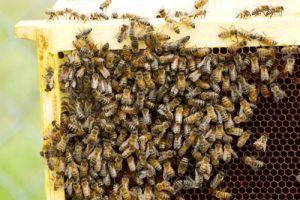 We might ask ourselves: Why does the USA, the richest country in the world, lead the world in coronavirus cases and deaths? With only 4% of the world’s population, we have 25% of all cases and 20% of all deaths. This cannot be blamed on mismanagement alone. Our government has for years favored business profits over public health and environmental health. For example, the EPA website warns that glyphosate (active ingredient in Roundup) at 700 parts per billion can cause “problems with kidneys or reproductive difficulties” and yet 700 ppb is the permitted level in U.S. tap water. Only .1 ppb is allowed in European Union tap water. Roundup also causes many problems with fungi, bacteria (like in our guts), kills insects, birds and in general undermines the health of our planet. It shows up in baby food and beer. This is one example of a poison in our ecosystem that is leading to the poor health in our nation and in our world.
We might ask ourselves: Why does the USA, the richest country in the world, lead the world in coronavirus cases and deaths? With only 4% of the world’s population, we have 25% of all cases and 20% of all deaths. This cannot be blamed on mismanagement alone. Our government has for years favored business profits over public health and environmental health. For example, the EPA website warns that glyphosate (active ingredient in Roundup) at 700 parts per billion can cause “problems with kidneys or reproductive difficulties” and yet 700 ppb is the permitted level in U.S. tap water. Only .1 ppb is allowed in European Union tap water. Roundup also causes many problems with fungi, bacteria (like in our guts), kills insects, birds and in general undermines the health of our planet. It shows up in baby food and beer. This is one example of a poison in our ecosystem that is leading to the poor health in our nation and in our world.
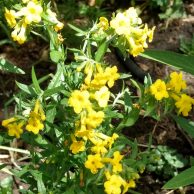 On our hikes, it seems we’re often exclaiming, “What a beautiful plant combination!”. Mother Nature’s inherent beauty and functional placement provide an amazing guide and inspiration for what we can create in our home garden or ecosystem. Mother Nature also helps guide us on how we can best support our pollinators.
On our hikes, it seems we’re often exclaiming, “What a beautiful plant combination!”. Mother Nature’s inherent beauty and functional placement provide an amazing guide and inspiration for what we can create in our home garden or ecosystem. Mother Nature also helps guide us on how we can best support our pollinators. In October of 2018, we were asked by the
In October of 2018, we were asked by the 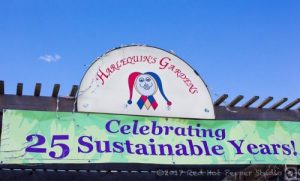
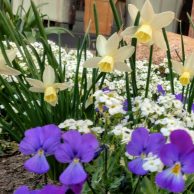 April 22 is Earth Day, originally planned to bring a billion people into the streets to let our leaders know for sure that the health and resilience of our planet and our environment is of the Utmost Importance. Of course, neither a billion nor a dozen people are going to congregate on Earth Day this year.
April 22 is Earth Day, originally planned to bring a billion people into the streets to let our leaders know for sure that the health and resilience of our planet and our environment is of the Utmost Importance. Of course, neither a billion nor a dozen people are going to congregate on Earth Day this year. We are having a real revolution in our relationship with our soils. The turning point is our change in focus from soil fertility to soil health. In the last 60 years of the “Green Revolution” (i.e. the petrochemical boom), soil was viewed as a physical structure and fertility was viewed as a measure of chemicals in the soil — primarily NPK, nitrogen, phosphorus and potassium. The petroleum industry could make these macronutrients from natural gas, which make plants grow but often in poor health. Weak plants attract insect pests and fungal diseases, so more petroleum in the forms of insecticides and fungicides added to the success of the oil industry. But this approach has led to “Peak Soil” where land is losing productivity, crops are losing nutritional value, the soil is eroding at extreme rates, and the health of animals and people has declined.
We are having a real revolution in our relationship with our soils. The turning point is our change in focus from soil fertility to soil health. In the last 60 years of the “Green Revolution” (i.e. the petrochemical boom), soil was viewed as a physical structure and fertility was viewed as a measure of chemicals in the soil — primarily NPK, nitrogen, phosphorus and potassium. The petroleum industry could make these macronutrients from natural gas, which make plants grow but often in poor health. Weak plants attract insect pests and fungal diseases, so more petroleum in the forms of insecticides and fungicides added to the success of the oil industry. But this approach has led to “Peak Soil” where land is losing productivity, crops are losing nutritional value, the soil is eroding at extreme rates, and the health of animals and people has declined.